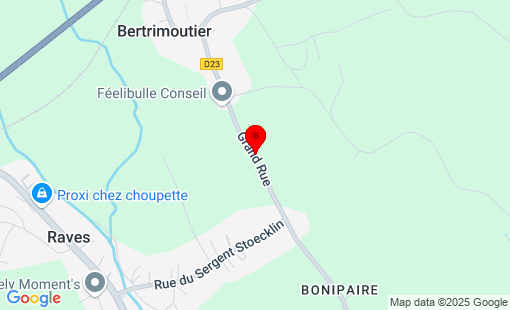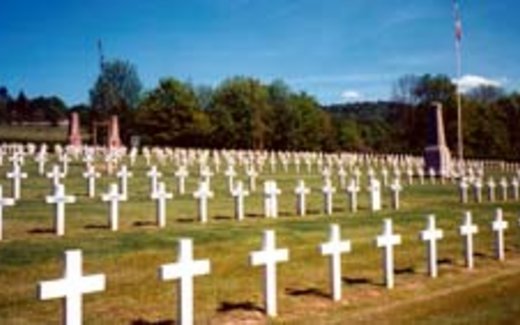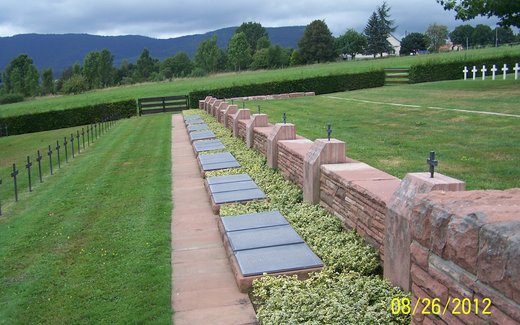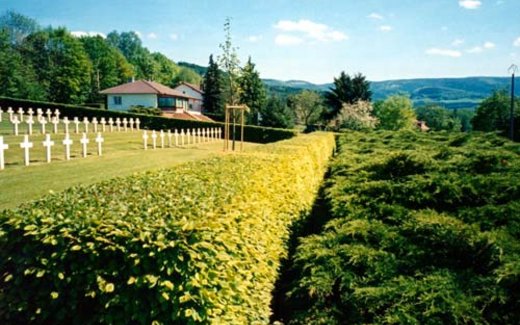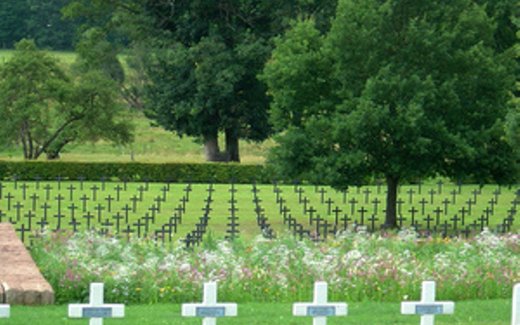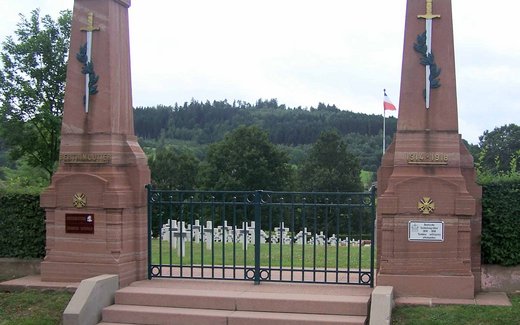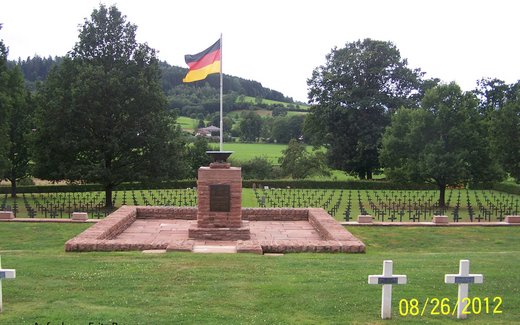France
Bertrimoutier
Total Occupation: 6.749 fatalities
Total Occupation: 6.749 fatalities
Département Vosges 6,749 German war dead 950 French casualties First World War The Franco-German military cemetery in Bertrimoutier was established in March 1921 by the French military authorities as a collective cemetery. It was the final resting place of the fallen who were provisionally buried during the fighting, whose graves were scattered in 26 communal areas and within a radius of up to 40 kilometers. The majority of the victims lost their lives in the last days of August 1914 during the so-called "Battle of Lorraine", when the German armies threw back the French troops that had advanced across the then imperial border and pursued them across the Vosges mountains. Some died in renewed fighting between October and December 1914 and during the war of position from 1915-1918. The Germans resting here belonged to units whose home garrisons were mainly in Bavaria, but also in Baden, Württemberg, Hesse, Saxony, Brandenburg and the Rhineland.
Repair work between the wars Initial work to improve the condition of the German part of the cemetery was carried out by the Volksbund Deutsche Kriegsgräberfürsorge e.V. (German War Graves Commission) on the basis of an agreement with the French military authorities on the treatment of joint cemeteries in 1928. in 1931, the two common graves received a border made of red Vosges sandstone. The entrance was redesigned with a forged gate and wing walls, and a memorial was erected between the common graves. However, the problem of permanently marking the German graves initially remained unresolved due to a lack of foreign currency and the outbreak of the Second World War in 1939. Final design Following the conclusion of the Franco-German War Graves Agreement on July 19, 1966, the Volksbund Deutsche Kriegsgräberfürsorge e.V. - financially supported by the German government - was able to carry out the final design of the German military cemeteries of the First World War in France. Young volunteers from the War Graves Commission had already begun the preliminary gardening work. in 1980, the site was thoroughly cultivated and the previous temporary wooden grave markers were replaced by metal crosses with the names and dates of the dead cast into them. Young helpers placed the necessary 35-kilogram concrete foundations at the graves, which were transported by the German Armed Forces. The names of the dead resting in the common graves are inscribed on cast metal plaques on the surrounding wall. Only around a third of the fallen are known by name. 1.243 of the fallen rest in individual graves, 53 of whom remain unknown. 5,506 victims are buried in the two common graves. The names of 4,080 remain unknown. For religious reasons, the four graves of the fallen of the Jewish faith were given a gravestone made of natural stone instead of a cross. The Hebrew characters read: 1 (above) "Here rests buried ...," 2 (below) "May his soul be bound into the circle of the living."
